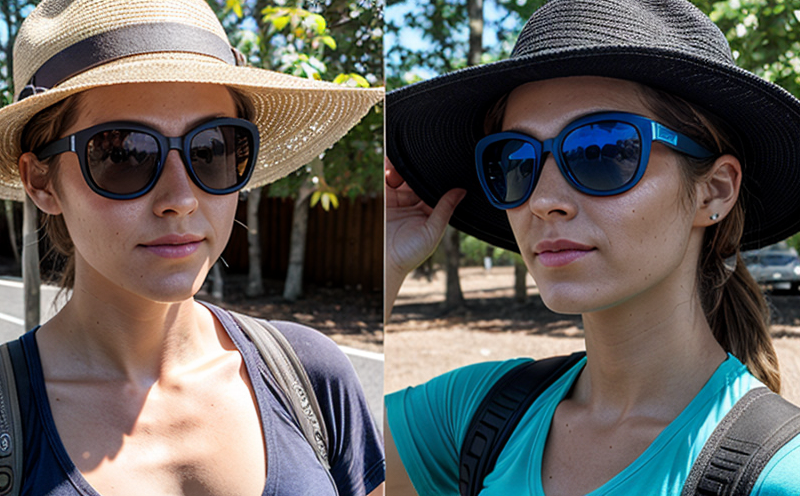DIN 67501 Light transmission testing of transparent materials
The DIN 67501 standard provides a stringent method for determining the light transmission properties of transparent materials, such as films, sheets, and other thin materials. This test is crucial in ensuring that products meet specified optical performance criteria, which are essential for industries ranging from automotive to construction.
Light transmission testing under DIN 67501 involves measuring how much visible light can pass through a sample without being absorbed or scattered. The standard specifies the use of a spectrophotometer to measure the transmitted light over a range of wavelengths, typically from 380 nm to 780 nm for visible light.
The test is conducted by placing the transparent material between two polarizers and measuring the intensity of the transmitted light. The degree of polarization is adjusted until the transmitted light is minimized; this point corresponds to the maximum light transmission value, which is then calculated as a percentage of incident light.
For accurate measurement, it's important that the test specimens are prepared according to the standard’s instructions. This includes ensuring that the material is free from defects and that the thickness and optical properties are consistent across all samples. The specimen should be cut into standard dimensions for testing purposes, which may vary depending on the type of transparent material being tested.
The DIN 67501 method ensures high precision by using a standardized reference material to calibrate the spectrophotometer before each test run. This helps in achieving consistent and reliable results across multiple tests. Additionally, the use of a controlled environment such as an ISO 8152-3 compliant chamber is recommended for conducting these tests to avoid external factors affecting the measurement.
Understanding the light transmission properties is critical when selecting materials for products that need to perform under specific lighting conditions. For instance, in the automotive industry, manufacturers require their windshields and windows to have high light transmission while also providing adequate UV protection. This test helps ensure that these requirements are met.
The DIN 67501 method is widely recognized for its accuracy and reliability, making it a preferred choice by many quality assurance departments and R&D teams across various sectors. It ensures compliance with international standards such as ISO 8992:2003 and ASTM D1003-08e1.
- Ensures consistent optical performance of transparent materials.
- Aids in meeting industry-specific lighting requirements.
- Provides reliable data for product development and quality control.
- Supports compliance with international standards like ISO 8992:2003.
Why It Matters
The importance of DIN 67501 light transmission testing cannot be overstated, especially in industries where the optical properties of materials significantly impact product performance. For instance, in the automotive sector, ensuring that windows and windshields have optimal light transmission is crucial for visibility under various lighting conditions.
Light transmission affects not only the visibility but also the overall comfort and safety of users. High-quality materials can enhance these aspects while minimizing glare and heat build-up. This is particularly important in environments where natural light plays a significant role, such as in commercial buildings or outdoor facilities.
In addition to automotive applications, DIN 67501 testing is also vital for other sectors like construction, electronics, and consumer goods. For example, in the construction industry, ensuring that glass and similar materials meet specific light transmission standards can lead to better energy efficiency and improved indoor lighting conditions.
The test results provide critical data that can influence design choices and material selection processes. It helps manufacturers make informed decisions about which materials are best suited for particular applications, ultimately leading to higher-quality products.
Industry Applications
DIN 67501 light transmission testing finds extensive application across multiple industries due to its role in ensuring the optical performance of transparent materials. In automotive manufacturing, this test is used to evaluate the quality and safety of windshields and windows. The ability to accurately measure light transmission helps manufacturers meet regulatory requirements while enhancing driver visibility under different lighting conditions.
In construction, the testing ensures that glass and similar materials are up to standard for building codes and energy efficiency standards like LEED (Leadership in Energy and Environmental Design). This is crucial for creating sustainable structures with optimal natural light distribution.
The electronics industry also benefits from this test by ensuring that components like lenses and displays have the correct optical properties. In consumer goods, it helps ensure that products meet aesthetic and functional expectations while remaining safe and comfortable to use.





